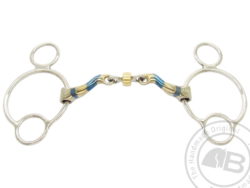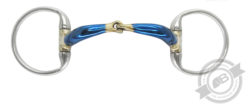Bitting solutions with Worldwide Tack – Bombers Eggbutt Ultra Comfy Lock Up
April’s Blog – Bitting solutions with Worldwide Tack
April the 1st and we’re here to discuss the latest Q & A’s we have here at Worldwide Tack. With bitting specialist, Stephen Biddlecombe, we investigate the latest issued affecting your horses mouth. Take a look below how Bomber Bits can dramatically improve the communication between you and your horse. Take a look below at the following to see if they can shed any reccomendations for you!
Bomber Bit Q & A with Worldwide Tack;
Q.
My riding club mare is very difficult to stop and slow down, even in trot. She lifts her head up when I want her to slow down. Ashe’s had all relevant checks done and her EDT says she has a small, fleshy mouth. We’ve tried a Waterford loose ring, French link and Wilkie snaffle, however she is still the same. Any suggestions?
A.
All of the bits that you have tried will use tongue pressure, to some extent. The Waterford will use the least amount of tongue pressure, but it does not eliminate the tongue pressure!
A small, fleshy mouth likely means that her bone structure is quite small; the fleshiness will hide this, to a large extent. The bit will need to fit her quite snugly, to prevent too much side to side movement. Side to side movement allows the bit to bump over the bars of the mouth, which will cause some discomfort.
We recommend a Bombers Eggbutt Ultra Comfy Lock Up for her. The Ultra Comfy Lock Up is double locked so that it cannot fold downwards or backwards; this means that it retains its shape in the horse’s mouth, and it eliminates any nutcracker action. The mouth piece is also angled on the sides, so that it goes up and over the tongue; this greatly reduces tongue pressure, while not greatly increasing pressure on the bars. Due to its shape, the Eggbutt Ultra Comfy Lock Up from Bombers will also fit horses with a narrow bottom jaw, without causing any discomfort.
Q.
My 7yo ISH does his flatwork in a copper lozenge loose ring snaffle, but when doing XC schooling in a 3 ring single jointed snaffle, he becomes very anxious, and throws his head up and runs forward. He has had all checks by EDT, physio, chiro, saddle fitter etc, and it seems to be purely an evasion technique. I was considering one of Colin Miles bits, e.g. as they have a centre-piece of rings for tongue pressure, and I think lozenges and rollers actually help him settle. Any ideas?
A.
The Colin Miles uses quite strong tongue pressure, and actually one of the signs that a horse does not accept tongue pressure very well is head throwing, as your horse exhibits.
Your copper lozenge loose ring does reduce the nutcracker action found with the single jointed bit that you have for XC, as it will have two joints either side of the lozenge. The double joint is often favoured by horses that are sensitive to the tongue and palate pressure that a snaffle gives.
We would recommend something else other than the Colin Miles range, at this stage. A Bombers McHardy is a nice mouthpiece, as it will take pressure off the tongue, due to its ergonomically-designed port, which may stop him from throwing his head up to avoid tongue pressure.
Therefore, we believe the sweet iron Bombers McHardy 2.5 Ring would be a good choice for XC. It is a kind of jointed Happy Tongue, in that it is ported to allow space for the tongue and relieve pressure in this area, but it also has a 40mm central roller, which deters leaning. It’s not terribly dis-similar to your well-accepted copper lozenge, in terms of a central element, however the sympathetically-shaped mouthpiece should be more well-tolerated than the jointed snaffle you have for jumping. We find it an excellent bit when more control is required, for example for XC.
As you know from your existing 3 ringed XC bit, a ringed cheekpiece introduces some poll pressure and leverage; so in effect with the Bombers McHardy 2.5 Ring, we are introducing a softer bit with reduced leverage on the mouthpiece and poll. Sometimes when a horse has an extreme reaction like yours, going to a softer bit rather than continually chasing a stronger bit can be the answer.




